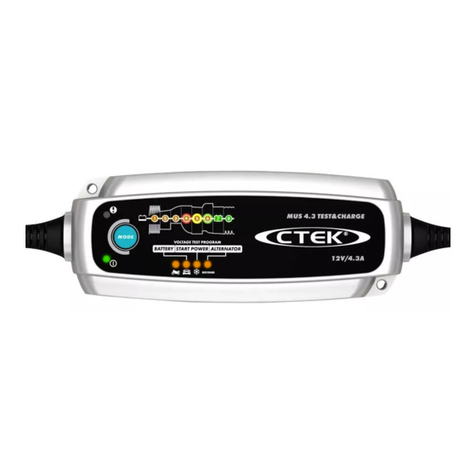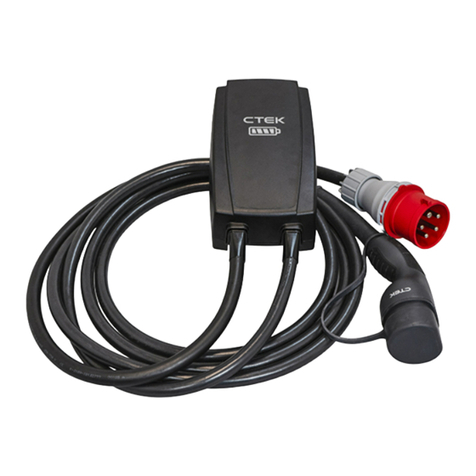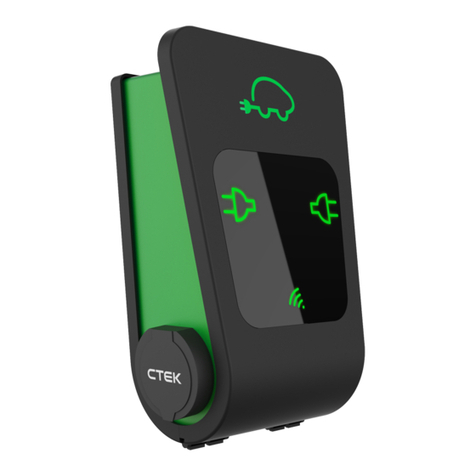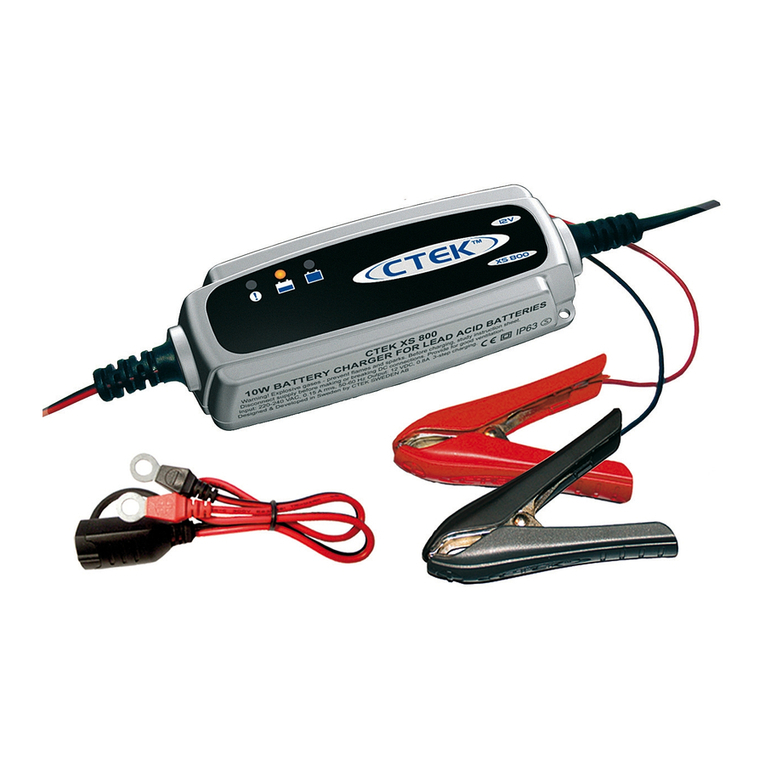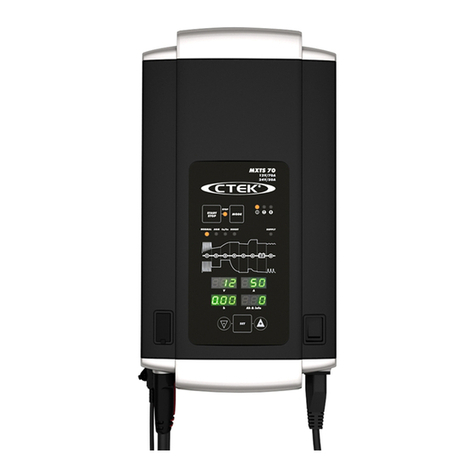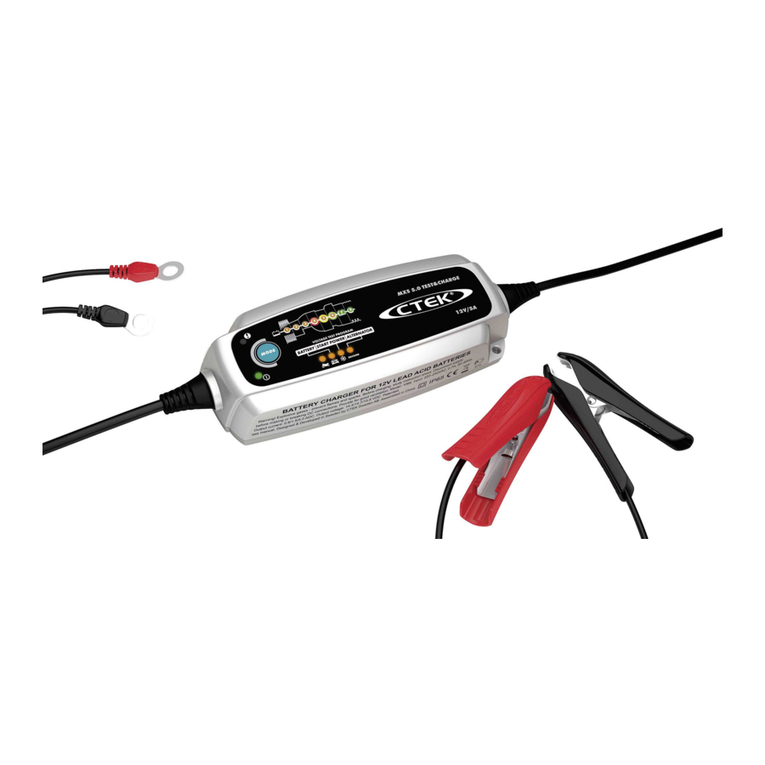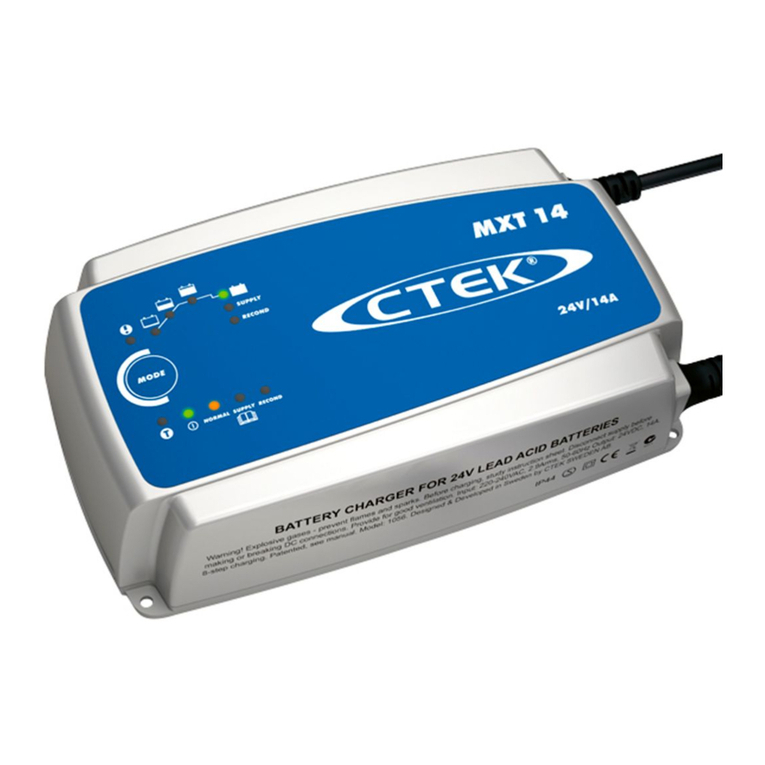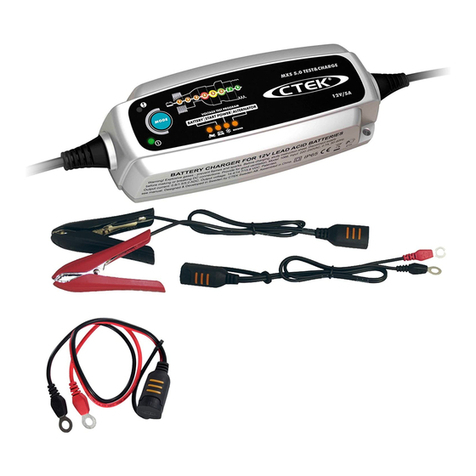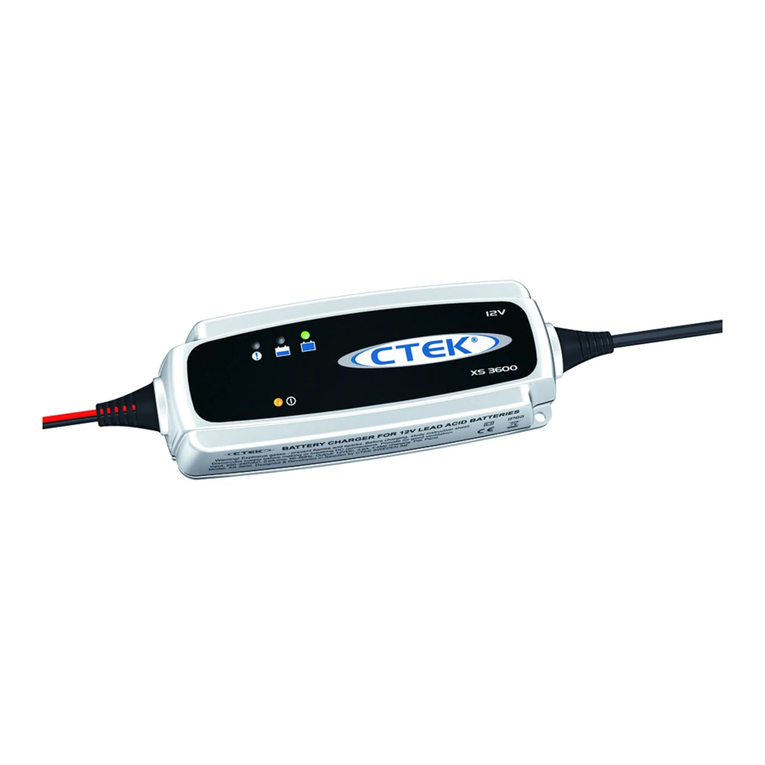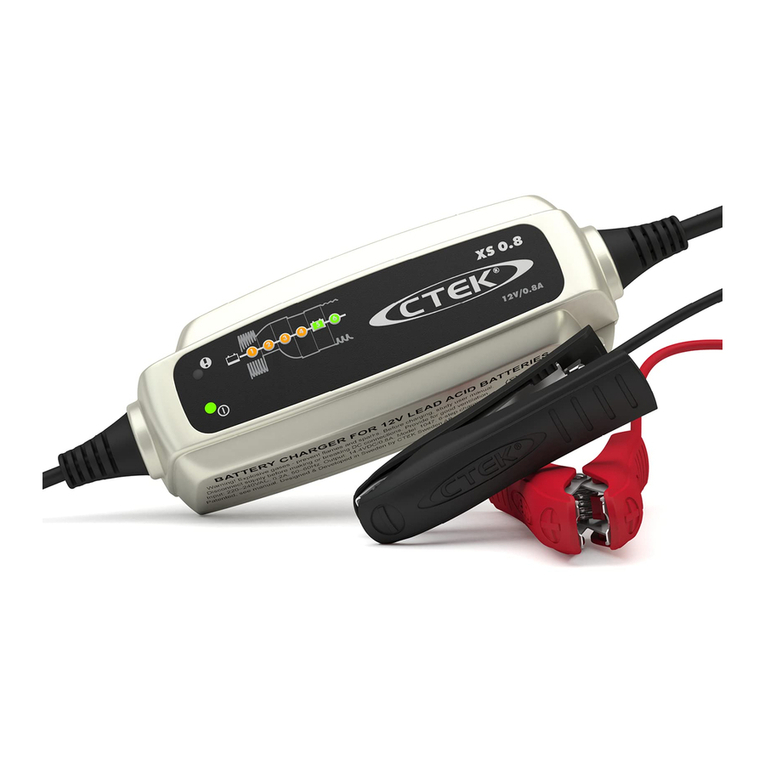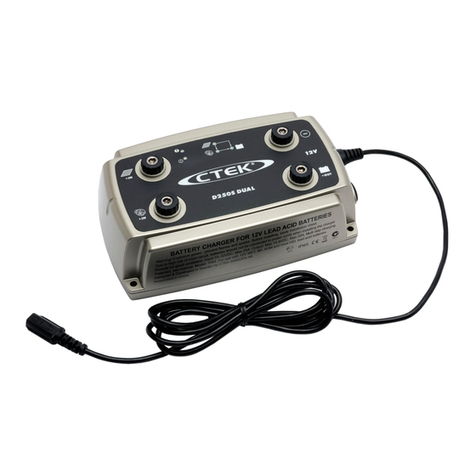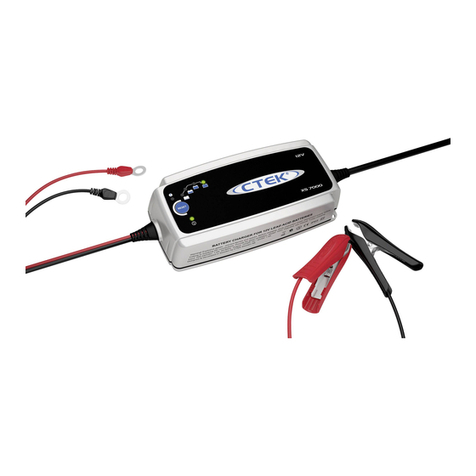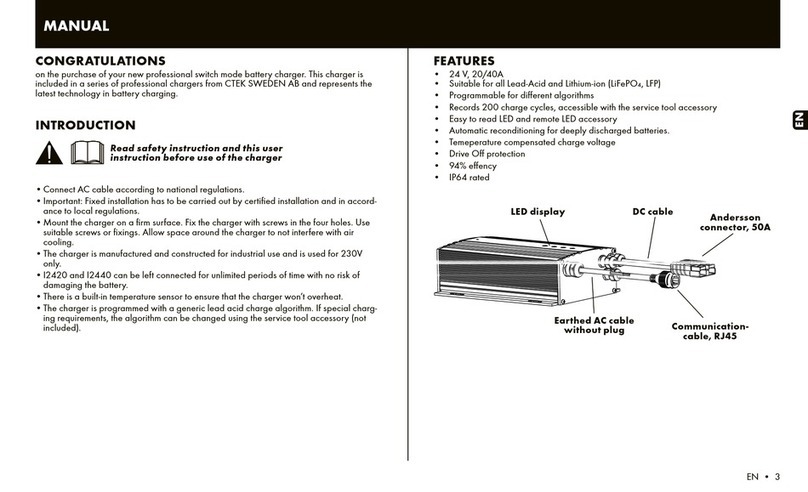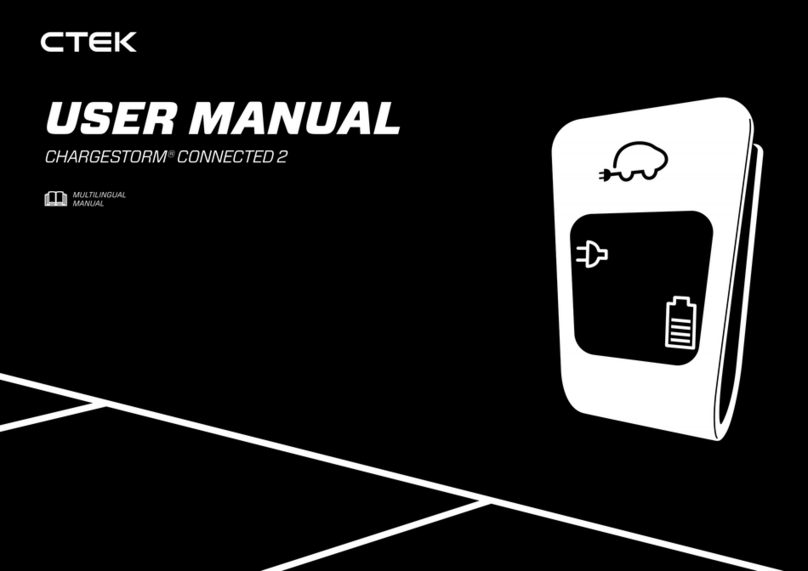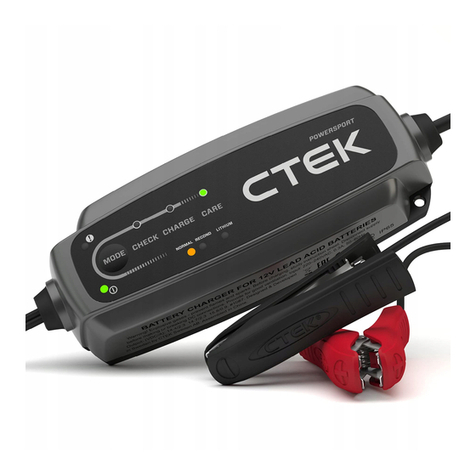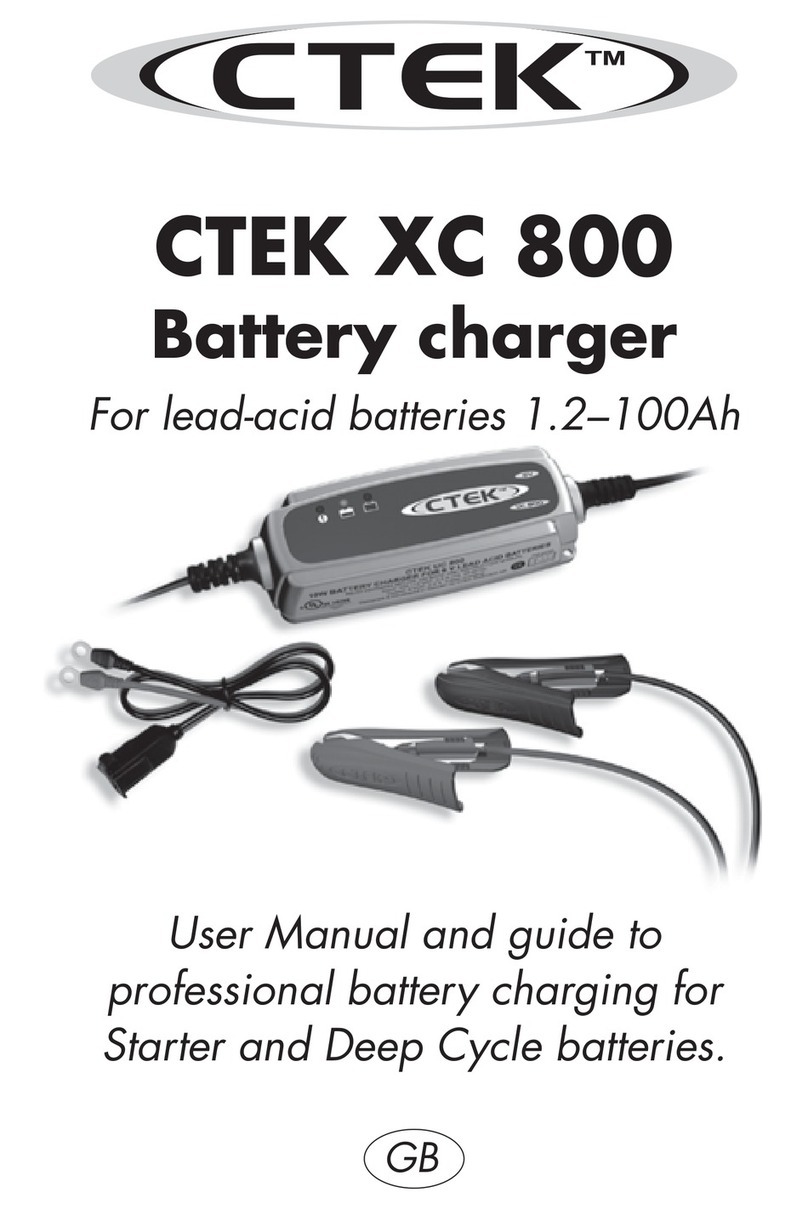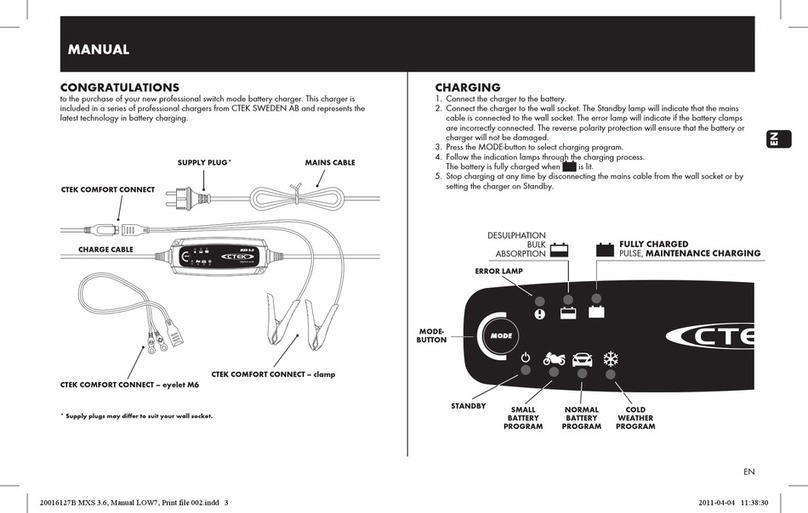6 • EN
14. DC CONNECTION
PRECAUTIONS
a) Connect and disconnect dc output clips only after setting
any charger switches to “off” position and removing AC
cord from electric outlet. Never allow clips to touch each
other.
b) Attach clips to battery and chassis as indicated in 15(e),
15(f), 16(b) through 16(d).
15. FOLLOW THESE STEPS WHEN
BATTERY IS INSTALLED IN
VEHICLE. A SPARK NEAR
BATTERY MAY CAUSE BATTERY
EXPLOSION. TO REDUCE RISK
OF A SPARK NEAR BATTERY:
a) Position AC and DC cords to reduce risk of damage by
hood, door or moving engine part.
b) Stay clear of fan blades, belts, pulleys, and other parts
that can cause injury to persons.
c) Check polarity of battery posts. POSITIVE (POS, P, +)
battery post usually has larger diameter than NEGATIVE
(NEG, N, -) post.
d) Determine which post of battery is grounded (connected)
to the chassis. If negative post is grounded to the chassis
(as in most vehicles) see (e). If positive post is grounded to
the chassis, see (f).
e) For Negative-grounded vehicle, connect POSITIVE
(RED) clip from battery charger to POSITIVE
(POS, P, +) ungrounded post of battery. Connect
NEGATIVE (BLACK) clip to vehicle chassis or engine
block away from battery. Do not connect clip to carbure-
tor, fuel lines, or sheet-metal body parts. Connect to a
heavy gage metal part of the frame or engine block.
f) For Positive-grounded vehicle, connect NEGATIVE
(BLACK) clip from battery charger to NEGATIVE
(NEG, N, –) ungrounded post of battery. Connect
POSITIVE (RED) clip to vehicle chassis or engine block
away from battery. Do not connect clip to carburetor,
fuel lines, or sheet-metal body parts. Connect to a heavy
gage metal part of the frame or engine block.
g) When disconnecting charger, turn switches to off, discon-
nect AC cord, remove clip from vehicle chassis, and then
remove clip from battery terminal.
h) See operating instructions for length of charge
information.
16. FOLLOW THESE STEPS WHEN
BATTERY IS OUTSIDE VEHICLE.
A SPARK NEAR BATTERY MAY
20018888A MUS 4.3 Test&Charge, Manual, Print file.indd 6 2013-01-15 16:28:27
